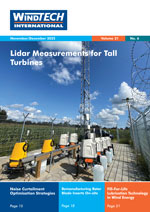A new standardised approach to quantifying the mechanical limits of subsea cables has been published to help reduce uncertainty around cable performance in the offshore wind industry. Developed by offshore wind companies and the Carbon Trust, the guidelines introduce a performance-based testing method, supported by a ‘safety factor philosophy’ and design methodology aimed at improving confidence in cable design and specification.
The Mechanical Limitations (MecLim) project combined physical testing and modelling, covering key stages in a cable’s lifecycle: installation, normal operation, and abnormal conditions. The guidance enables cable manufacturers, installers, and project developers to optimise installation windows and improve vessel deployment planning, potentially lowering project costs over the cable’s lifetime. The guidelines include:
- Performance testing: focusing on actual mechanical capability rather than conformance alone.
- Safety factor framework: a consistent approach to applying safety margins across lifecycle stages, covering parameters such as bending radius, tension, and sidewall pressure.
- Modelling guidance: flexible approaches to numerical modelling, addressing key variables and uncertainties.
- Test enhancements: updated procedures including tensile bending tests, temperature variations, and realistic displacement rates.










